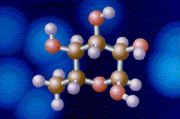


 |
Index page |
Task6 (index) |
TASK 6SPA PROJECT IN COPENHAGEN Alternatives to chlorination
Some of the alternatives that can be adapted to a spa are the following ones: ozonation, ultra-violet system, copper-silver ionization, salt water chlorination or a hydro physical dynamic flow water treatment. There are also other treatments on the market like physical treatment with magnets, disinfection with hydrogen peroxide or disinfection with PHMB (polyhexamethylene biguanide). They are not proposed for this project for several reasons. Concerning the treatment with magnets, it is claimed to be a help for the pool’s normal disinfection. They are maybe a help but they do not disinfect the water so a disinfection system is required. Besides some scientific are sceptical with this technique: there is no clear theoretical basis for why it should work. A disinfection system with hydrogen peroxide is not allowed for swimming pool disinfection unless it is used in combination with other disinfectant (UV, ozone, silver salts…). It improves the disinfection ability of other disinfectants. But hydrogen peroxide is not a powerful disinfectant compared with chlorine, bromine or ozone. Finally, the PHMB is a powerful disinfectant but it needs to be used with an algaecide (like hydrogen peroxide). However, its cost is quite high; it needs to be maintained once a week and it is incompatible with chlorine, bromine or copper. It required a complete draining of the pool every three years. As it is a dangerous product, caution is required for use and storage.
Ozonation (with corona discharge):
Ultra-violet system: It is a physical treatment with UV radiation. The light necessary for UV disinfection is generated in special UV lamps. One of the most effective wavelengths and the most often used for disinfection is at 254 nm; it belongs to UV-C. This intensive UV light reaches the micro-organisms in the water and impacts directly on their DNA. By changing the DNA, the cell division of the micro-organism is interrupted: it can no longer reproduce itself and thus loses its pathogenic effect.
Copper-silver ionization:
Salt water disinfection: HOCl (anode) + NaOH (cathode) à NaOCl (sodium hypochlorite) that kills micro-organisms HCl (anode) + NaOH (cathode) à NaCl (salt) reused for the electrolysis The pool actually produces its own chlorine to sanitise itself. It is a closed loop system because the salt is used over and over again and only lost through splash out, carry out, backwashing and rainfall.
Hydro physical dynamic flow water treatment: This is a physical treatment. In a reactor chamber there is a cyclone process. The water is supplied by a high pressure pump to the reactor chamber. Consequently, very high flow and rotation velocities are created. The flow volume inside the reactor is diverted into several water layers. The vacuum centre cleaning (about -1,0 bar) permits to add natural oxygen mixture from the outside air directly to the reactor chamber process. The additional oxygen is dissolved in the water, forming free radicals, which act as an oxidation cold combustion cleaning grade process.
You can send comments : aub@niras.dk
Started by NIRAS supervisor Sergio Fox on 27th March 2006. © COPYRIGHT 2001 ALL RIGHTS RESERVED Aurelie.dk |
